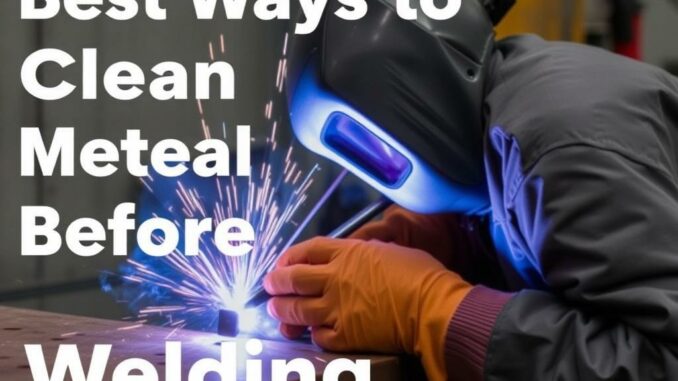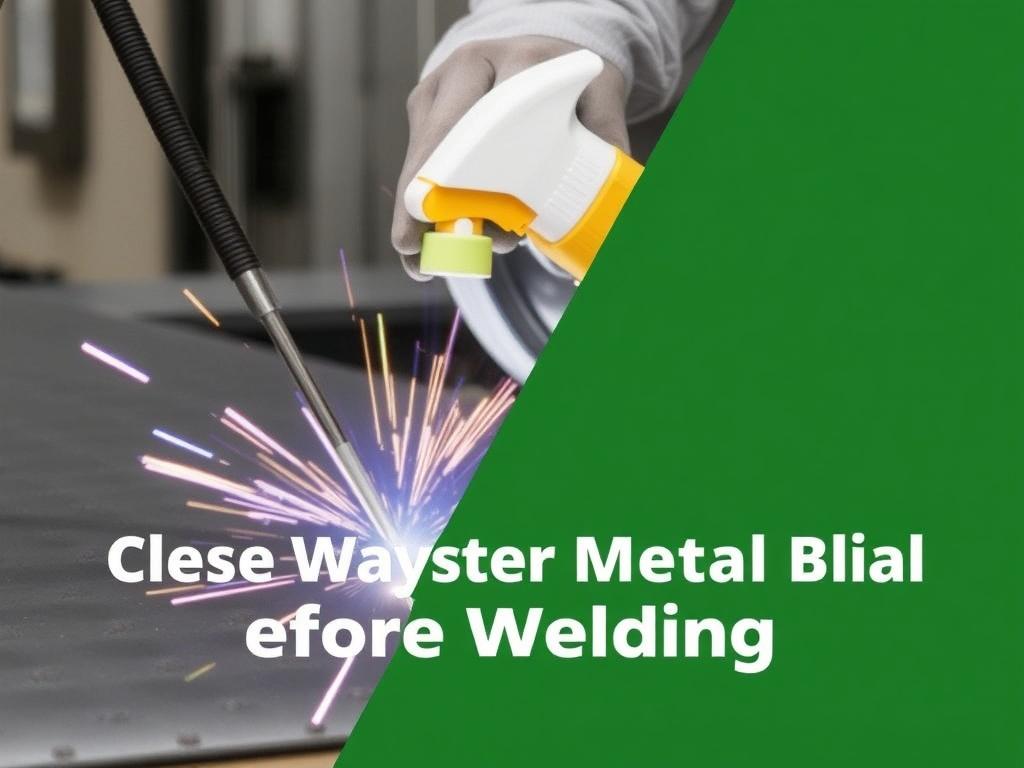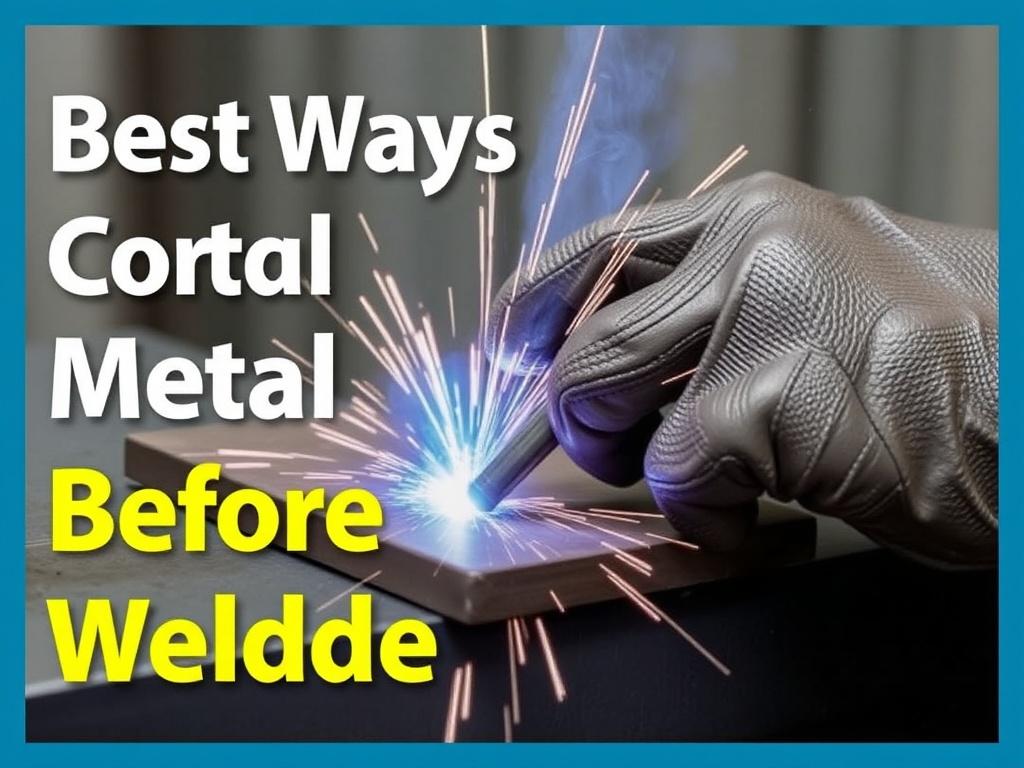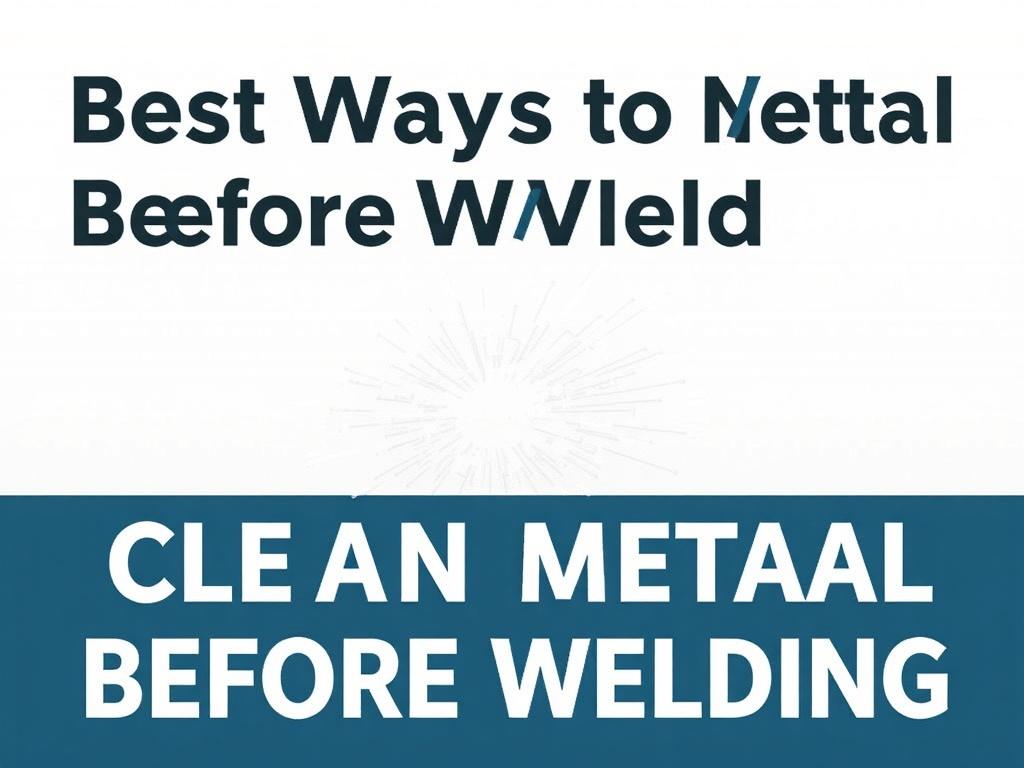
Welding is an art and a science wrapped together in a single process, transforming raw metals into sturdy, reliable structures. However, many overlook one of the most crucial steps to ensure a successful weld: cleaning the metal before welding. Whether you are a seasoned welder or a passionate hobbyist, knowing the best ways to clean metal before welding is fundamental to achieving strong, clean welds free from imperfections.
In this extensive guide, we’ll dive deeply into why metal cleaning is paramount, explore various methods and tools you can use to prepare your metal surfaces, and share practical tips to make your welding projects smooth and successful. So, let’s embark on this journey to master the essential art of metal preparation before welding.
Why Is Cleaning Metal Before Welding Important?
Before jumping into any welding project, understanding the importance of metal preparation sets the foundation for great results. Metal surfaces are often covered in contaminants such as rust, dirt, oil, grease, mill scale, paint, and oxidation. These unwanted materials adversely affect the welding process, causing weak welds, porosity, inclusions, and even weld failure.
When a welder applies heat to join two pieces of metal, any contaminants on the surface can become trapped in the weld pool. This not only weakens the bond but also creates defects that compromise the structural integrity of the weld. Moreover, dirty metals can lead to poor arc stability, increased spatter, and excessive smoke – making the welding experience frustrating.
Therefore, cleaning metal before welding is not just a recommended practice; it is a critical step that affects the durability, appearance, and quality of your finished weld. Understanding the best ways to clean metal before welding will significantly enhance your project’s success.
The Science Behind Clean Metal Welds
Clean metal surfaces ensure proper fusion between the metal base and the filler material, which happens when the molten metals mix correctly under the welding arc. Contaminants act as barriers, preventing proper fusion and trapping impurities inside the weld joint. These impurities create weak spots that can crack or corrode over time, compromising safety and longevity.
For this reason, industries with strict safety standards — from automotive and aerospace to construction and manufacturing — require rigorous cleaning protocols to prepare metals before welding.
Common Contaminants to Remove Before Welding
Before covering the actual cleaning techniques, it’s helpful to understand the common types of contaminants that should be removed before welding. Each type requires a different cleaning approach to be eliminated effectively.
| Contaminant | Description | Effect on Welding | Typical Cleaning Method |
|---|---|---|---|
| Rust | Iron oxide that forms when metal is exposed to moisture and air. | Prevents good metal fusion, causes porosity and weak welds. | Wire brushing, grinding, chemical rust removers. |
| Mill Scale | A flaky layer of iron oxide formed during hot rolling of steel. | Flakes off during welding, causing inclusions and spatter. | Grinding, sanding, chemical descaling. |
| Oil and Grease | Residual lubricants and oils from machining or handling. | Causes porosity and arc instability due to burning off. | Solvent cleaning, degreasing, wiping with acetone. |
| Paint or Coatings | Protective or decorative layers applied on metal surfaces. | Burns and produces toxic fumes; causes weld defects. | Mechanical removal, chemical paint strippers. |
| Oxidation | General surface corrosion from exposure to air. | Interferes with welding and bond quality. | Wire brushing, grinding, sanding. |
Best Ways to Clean Metal Before Welding

Now that we understand why cleaning is vital and what contaminants to look for, let’s uncover the best ways to clean metal before welding. The cleaning method you choose depends on the type of metal, its condition, and the contaminant involved. Here are some highly effective techniques that welders and fabricators commonly use.
1. Wire Brushing
Wire brushing is one of the simplest yet most effective ways to clean metal surfaces. It removes rust, mill scale, and loose oxidation by abrasive scrubbing. Wire brushes are available as handheld manual types or power tools with wire brush attachments.
Manual wire brushing is ideal for light cleaning and small projects, allowing precise control and the ability to reach tight areas. Power wire brushes mounted on drills or grinders are better suited for extensive cleaning jobs and can quickly remove medium to heavy rust or scale.
Wire brushing is environmentally friendly since it does not use chemicals, but it can generate metal dust, so wearing protective equipment is advisable.
Tips for Wire Brushing:
- Use a brush made of stainless steel wires for stainless steel work to prevent contamination.
- Brush in the direction of the weld seam to ensure clean metal along the joint.
- Wear gloves and protective eyewear to prevent injuries from flying particles.
2. Grinding and Sanding
Grinding and sanding are mechanical cleaning methods that remove surface contaminants through abrasion. These techniques are highly effective for removing thick layers of rust, mill scale, paint, and oxidation. Angle grinders equipped with abrasive discs, flap wheels, or sanding pads can quickly prepare metal surfaces.
For delicate or precision work, sanding with finer grit sandpaper smooths the surface and prepares it for welding. Grinding is best when you need to clean a large area quickly or remove tough material, but care must be taken not to remove too much base metal or weaken the piece.
Common Tools for Grinding and Sanding:
| Tool | Description | Best For |
|---|---|---|
| Angle Grinder | Power tool with abrasive discs or flap wheels. | Heavy rust, mill scale, paint. |
| Sanding Block or Orbital Sander | Manual or power tools using sandpaper grit. | Fine surface preparation and smoothing. |
| Dremel Rotary Tool | Small, precise power tool with abrasive attachments. | Tight or detailed areas. |
3. Chemical Cleaning and Degreasing
Chemical cleaning involves using solvents, degreasers, or acid solutions to remove oils, grease, paint, rust, and oxidation. This method is especially useful for cleaning metals with stubborn contaminants difficult to remove by mechanical means.
Degreasers such as acetone, mineral spirits, or specialized metal cleaners dissolve oil and grease effectively. Applying them with a clean cloth and wiping dry ensures a contaminant-free surface.
Rust removers often contain acids like phosphoric acid or oxalic acid that chemically break down rust and mill scale, turning them into easily removable compounds.
Caution: Use chemicals in well-ventilated areas, wear protective gloves, and follow manufacturer instructions to avoid injury or metal damage.
Steps for Chemical Cleaning:
- Apply the degreaser or rust remover to the metal surface using a brush, spray, or cloth.
- Let it sit for the recommended time to penetrate contaminants.
- Scrub the surface with a wire brush or scouring pad to loosen residues.
- Rinse thoroughly with water if required and dry the metal completely before welding.
4. Abrasive Blasting (Sandblasting)
Abrasive blasting, commonly known as sandblasting, is a powerful cleaning technique where high-pressure air propels abrasive media (like sand, glass beads, or steel grit) onto the metal surface. This process strips away rust, paint, and oxidation rapidly while leaving a roughened surface ideal for welding.
Sandblasting is commonly used in industrial settings for large volumes of metal preparation; however, portable units allow smaller workshops or even DIY enthusiasts to benefit from this high-efficiency method.
Advantages of abrasive blasting:
- Removes contaminants thoroughly even in hard-to-reach areas.
- Creates a consistent surface profile that improves weld penetration.
- Does not heat the metal, avoiding warping or distortion.
Important Note: Because abrasive blasting produces a lot of dust and debris, proper ventilation, PPE (personal protective equipment), and environmental controls are crucial.
5. Scraping and Chipping
For thick rust or paint, mechanical scraping or chipping may be necessary before finer cleaning methods. A cold chisel, scraper, or wire wheel can remove hard chunks of scale or flaking rust. This is usually a preparatory step before using grinding or chemical cleaning.
While not highly technical, scraping requires some muscle and patience. It works well for spot cleaning or pre-cleaning large weld areas.
Choosing the Right Cleaning Method for Different Metals
Metal type and thickness play a major role in deciding the most suitable cleaning approach. Some metals are more reactive or delicate, while others tolerate aggressive methods well.
| Metal Type | Recommended Cleaning Methods | Methods to Avoid |
|---|---|---|
| Steel (Carbon Steel) | Wire brushing, grinding, sanding, chemical degreasing, abrasive blasting. | Harsh acids without proper rinsing, as they can cause pitting. |
| Stainless Steel | Wire brush (stainless steel wire), sanding with fine grit, chemical cleaners designed for stainless. | Carbon steel wire brushes (to avoid contamination), harsh acids that promote corrosion. |
| Aluminum | Light sanding, chemical degreasing, non-metallic wire brushes, mild abrasive blasting. | Aggressive grinding (can remove too much metal), steel wire brushes (causes contamination). |
| Cast Iron | Wire brushing, grinding, chemical rust removers, light abrasive blasting. | Excessive mechanical grinding that causes cracks or overheating. |
Step-by-Step Guide: Cleaning Metal Before Welding
Putting knowledge into practice is what matters most. Here’s a step-by-step guide you can follow to clean metal effectively before welding, incorporating multiple methods for the best results.
- Inspect the Metal Surface: Identify types of contaminants present such as rust, oil, paint, or scale.
- Initial Removal: Use scraping or chipping to break off loose debris, flakes, or thick rust.
- Degrease: Apply a solvent or degreaser with a clean cloth to remove oils and grease.
- Mechanical Cleaning: Use wire brushing, sanding, or grinding to eliminate rust, mill scale, and oxidation.
- Chemical Cleaning (Optional): For deeply embedded rust or coatings, apply appropriate chemical cleaners and rinse carefully.
- Final Inspection: Ensure the surface is clean, dry, and free from contaminants before welding.
Common Mistakes to Avoid When Cleaning Metal Before Welding
Even seasoned welders can make mistakes that hinder their project’s quality. Here are some common pitfalls to steer clear of:
- Skipping Cleaning: Welding on dirty metal reduces weld quality dramatically.
- Using Contaminated Brushes: Using carbon steel brushes on stainless steel causes cross-contamination and corrosion.
- Over-Grinding Thin Metals: Removing too much base metal can weaken the piece.
- Neglecting Safety: Failing to wear PPE or ventilate when using chemicals or abrasive blasting.
- Not Drying Metal Properly: Moisture on the surface can cause porosity and cracking.
Additional Tips for Achieving Clean and Strong Welds

Beyond cleaning, a few additional practices help ensure that your welds are top-notch:
- Use Fresh Filler Material: Avoid filler rods or wires contaminated with grease or moisture.
- Control Your Work Environment: Work in clean, dry areas to prevent contaminants settling on cleaned surfaces.
- Practice Proper Welding Techniques: Correct arc length, travel speed, and welding parameters complement your clean metal prep.
- Regularly Maintain Tools: Clean grinding wheels and wire brushes frequently to maintain their effectiveness.
Summary Table: Best Ways to Clean Metal Before Welding

| Cleaning Method | Best For | Advantages | Precautions |
|---|---|---|---|
| Wire Brushing | Rust, light scale, oxidation | Simple, inexpensive, chemical-free | Wear PPE; use appropriate wire type |
| Grinding and Sanding | Heavy rust, paint, mill scale | Fast, thorough surface prep | Avoid excessive metal removal |
| Chemical Cleaning & Degreasing | Oil, grease, stubborn rust, paint | Penetrates difficult contaminants | Use in ventilated areas; protective gear necessary |
| Abrasive Blasting | Large surfaces, thick rust/paint | Highly effective, fast | Requires PPE and dust control |
| Scraping & Chipping | Loose flakes, thick rust | Prepares surface for finer cleaning | Requires effort; care with delicate metals |
Conclusion
Cleaning metal before welding may seem like a tedious step, but it is absolutely essential for producing strong, clean, and lasting welds. The best ways to clean metal before welding depend on the type of metal, its surface condition, and the contaminants present. Whether you prefer wire brushing, grinding, chemical cleaning, or abrasive blasting, the goal remains the same: to prepare the metal so it can fuse properly and withstand the rigors of use.
By adopting the right cleaning methods and following a careful preparation routine, you set yourself up for welding success. Remember, a clean weld is a strong weld. So next time you pick up your welding torch, allocate time to clean your metal surfaces professionally. Your joints, your projects, and your peace of mind will thank you.
Happy welding!
